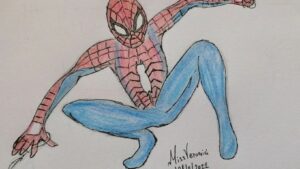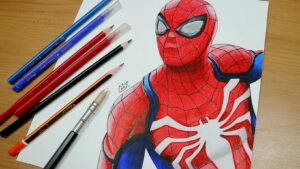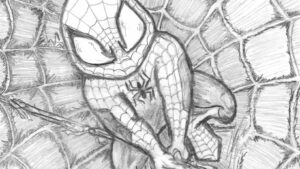Ever dreamed of sketching your favorite superhero, Spiderman, with your own hands? It’s not as daunting as it seems. This article will provide step-by-step instructions to help you create your own spectacular Spiderman drawing taking into account the rise of mixed versions and styles. Whether you’re a seasoned artist or a beginner looking to improve your skills, this guide is designed to make the process enjoyable and rewarding. So, grab your pencils, it’s time to bring the web-slinger to life on your canvas.
Drawing: Spiderman

Delving deeper into Spider-Man’s design illuminates three main components: structure, costume design, and iconic poses. It doens’t matter the global trade of styles that the character has acquired historically, the relationship between these elements enhances the depth and realism of your Spider-Man artwork.
Understanding Spider-Man’s anatomy forms the first checkpoint in your journey towards perfecting the web-slinger’s portrayal. Spider-Man’s anatomy, akin to a well-built gymnast’s physique, showcases a lean body frame endowed with muscular strength. These features serve as fundamental guidelines during the sketching phase.
Spider-Man’s unique costume design marks the second critical component in capturing his likeness accurately. Its design varies across different comic books and movies, a fact that provides latitude in your creative process.
Lastly, imitating iconic Spider-Man poses accelerates your move towards an optimized Spider-Man sketch. The web-slinger’s dynamic, airborne poses highlight his agility and acrobatic abilities, the essence of Spider-Man’s character.
Styles and Inspirations for Drawing Spider-Man

Marvel comics, notably Spider-Man’s creators Stan Lee and Steve Ditko, provide a rich catalogue of styles and inspirations for artists. Retaining distinct character traits, artists get creative leeway from different Spider-Man incarnations across comic books, animated shows, and films. For example, the classic comic book style, featuring bold lines and highly detailed suits, contrasts with the minimalist, sleek animation in “Into the Spider-Verse.”
Sam Raimi’s Spider-Man trilogy, known for its detailed webbing and metallic suit accents, offers a realist approach to the character’s costume design while the recent video game adaptation provides a high-tech, futurist take on the suit. Observing these differing styles, and selecting elements that appeal to the artist, allows for the creation of a unique Spider-Man depiction.
Utilizing a myriad of reference images from these interpretations helps maintain an accurate and dynamic portrayal of Spider-Man. These sources provide cues about how light interacts with the suit, the nuances in his physique, and how his movements stretch or contract his outfit, supporting an artist’s pursuit of capturing Spider-Man’s agility and strength.
Techniques and Tips for Beginners

Crafting an authentic representation of Spider-Man hinges on grasping some essential elements. Firstly, bet on basic shapes to map out Spider-Man’s structure. Circles compose the head and joints, rectangles shape the torso and limbs, referring to humans anatomy enhances realism. Noticing the importance of proportionality ensures the character doesn’t appear deformed, with Spider-Man’s height estimated to about 6 to 7 head lengths.
Secondly, mastering Spidey’s suit design becomes vital. Spider-Man models a distinctive pattern: red sections dotted by black webbing, and large, white eyes resembling a masked spider, imbues the design with identity. Integrating some costume variations, based on the Marvel Universe, adds additional flavor to the rendering.
Lastly, gaining insight into Spider-Man’s dynamic movements proves fundamental. Capturing the kinetic character necessitates studying iconic poses: swinging from web lines, crawling on walls, and high leaps. Focusing on action lines bolsters the sensation of movement.
In-between, keeping the pencil strokes light allows for easy alterations. Erasing guidelines, once the final outline sturdifies, tidies up the image. Most importantly, practicing and iterating on sketches contributes to steady improvement.
Advanced Drawing Techniques for Spider-Man
Mastering Spider-Man’s sketching is indeed a journey, much like the web-slinger’s own evolution. The process may be challenging but it’s equally rewarding. Artists of all levels can enhance their skills by understanding Spider-Man’s anatomy, costume variations, and iconic poses. They’ll find that using basic shapes for outlining and light pencil strokes for easy adjustments are particularly helpful. It’s also crucial to practice different styles, drawing inspiration from Marvel comics, animated shows, films, and video games. Iterating on sketches not only improves technique but also allows for a touch of originality in every Spider-Man portrayal. Remember, the key lies in continuous practice and the courage to experiment. Happy sketching!


